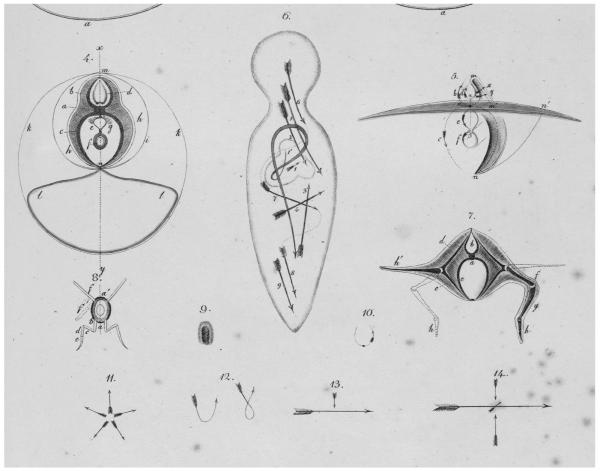Fig. 2.
The four types of development. While the first two plates in Karl Ernst von Baer’s celebrated treatise give series of cross- and longitudinal sections through chick development, the complex third plate uses more schematic figures to illustrate his general propositions. There was no single series, he insisted, but the animal kingdom was rather divided into four fundamentally different types with different modes of development. Figure 4 is the much-reproduced “ideal vertical cross-section of the embryo of a vertebrate”, while Figure 5 indicates the transformation of the embryo and Figure 6 its movements. Figures 7 and 8 compare vertebrate and ‘articulate’ (annelid and arthropod) extremities respectively, while Figure 9 shows a jellyfish embryo, and Figure 10 the articulate scheme of development. The last four figures represent the modes of development in the four types: (11) radiates, (12) molluscs, (13) articulates and (14) vertebrates. Coloured copper engravings from von Baer, Über Entwickelungsgeschichte der Thiere: Beobachtung und Reflexion, part 1 (Königsberg, 1828), Plate III (detail), by kind permission of the Syndics of Cambridge University Library.

